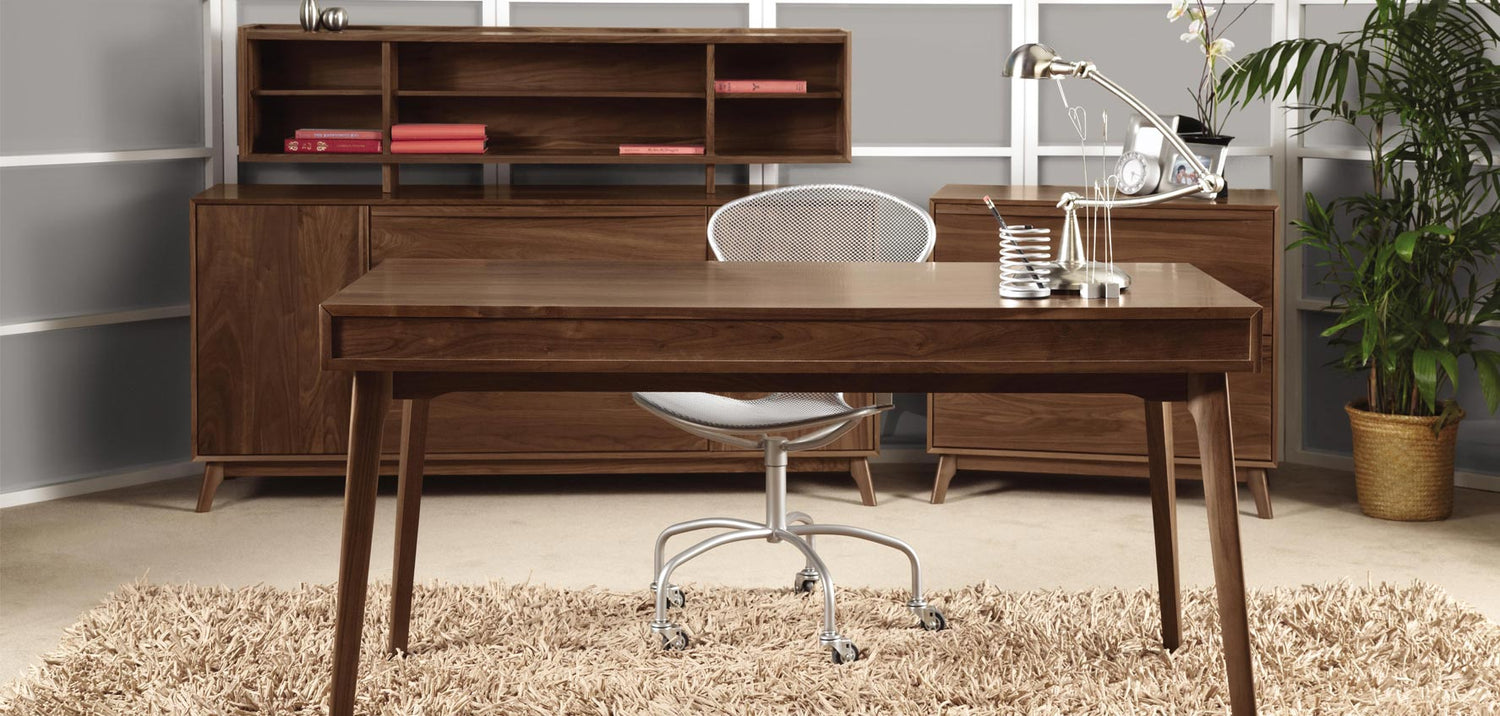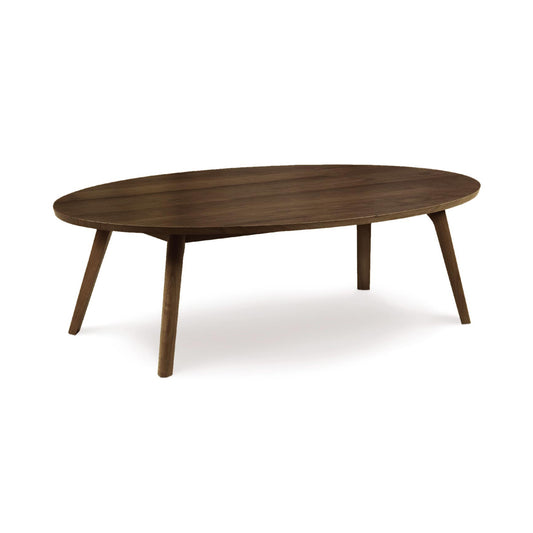Walnut Wood
-
Black walnut wood is dark, hard, dense and tight-grained. It's prized by woodworkers for its strength, grain and color. It polishes to a very smooth finish, and the color ranges from creamy white in the sapwood to a dark chocolate in the heartwood.
Over the years, natural walnut wood develops a lustrous patina. As the only dark-brown domestic wood species, it has a large following of devoted woodworkers and fine furniture aficionados. Walnut is also found in upscale cabinets, natural wood flooring, kitchen accessories, gunstocks, and more.
Although there are many varieties of walnut trees, just a handful are native to North America. Of them, the Eastern Black Walnut, also called the American Black Walnut or American Walnut, is the one typically used for woodworking.
-
Characteristics of Walnut Wood
- Color: Light brown to dark chocolate, with some blonde or yellow as well
- Source: Black walnut tree (Juglans Nigra)
- Durability: 630 kg/m3, 38 lbs, 1010 on the Janka scale
- Cost: $2 to $38 per board feet
- Common Uses: Furniture, cabinets, flooring, gun stocks, paneling, veneers, novelties, kicknacks
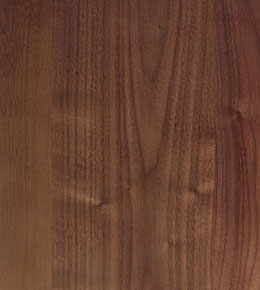
What Color is Walnut Wood?
Most people are familiar with walnut wood in its darkest state, which can be a deep chocolate or coffee color. In fact, its the only dark wood native to North America. However, its actually only the center of the tree which bears the deep hues. This is called the heartwood, and it may also have lighter browns, purples, grays, or reddish tints. The outermost portion of the tree known as the sapwood because it carries the trees nutrients is typically a pale blonde color, though it can also be yellow-gray as well.
Unlike cherry, maple, and oak (which all darken in color as they age), walnut wood will actually lighten slightly over time. This aging process isnt as dramatic of a change as some other woods we offer, and it can be stayed somewhat with an oil finish, which saturates the grain and adds a slight honey tint that comes out in greater detail as the piece ages and more oil is applied.
Why Does Walnut Wood Change Colors Over Time?
Many things can change the natural color of walnut wood. For example, the elements will often darken light wood and lighten dark wood, so sun exposure over a period of years will typically cause walnut wood furniture to lighten.
While some will use stain on walnut wood, which will make it maintain the darker hue indefinitely, it is typically clear-coated or oiled. A clear coat doesnt stop the color change altogether, but it can minimize it if maintenance is performed regularly. On the other hand, an oil-finished piece needs to be oiled regularly, which will give it richer hues over time.
Some wood producers will also use steam in their drying process to try to even out the coloring between the heartwood and sapwood as well. This often brings out more grays in the piece, so its a practice our craftsmen like to avoid when selecting their lumber.
What are the Common Uses of Walnut Wood?
Walnut wood is commonly used in knickknacks, carvings, and gunstocks, as well as for cabinets, flooring, furniture, and wood veneers.
What Does the Grain Pattern of Walnut Wood Look Like?
Generally speaking, walnut wood is straight-grained, though it can sometimes have waves or curls which enhance the character of a piece.
Is Walnut a Hardwood or Softwood?
A common misconception about hardwood vs. softwood is that it somehow indicates the heartiness of the wood or its resistance to damage, such as scuffing or denting. In fact, the term hardwood simply means the wood came from a dicot tree, such as a broad-leaf variety, whereas softwood refers to wood which comes from gymnosperm trees, like conifers. Ergo, common softwoods are pine, fir, and cedar, while hardwoods include walnut, cherry, maple, and oak.
-
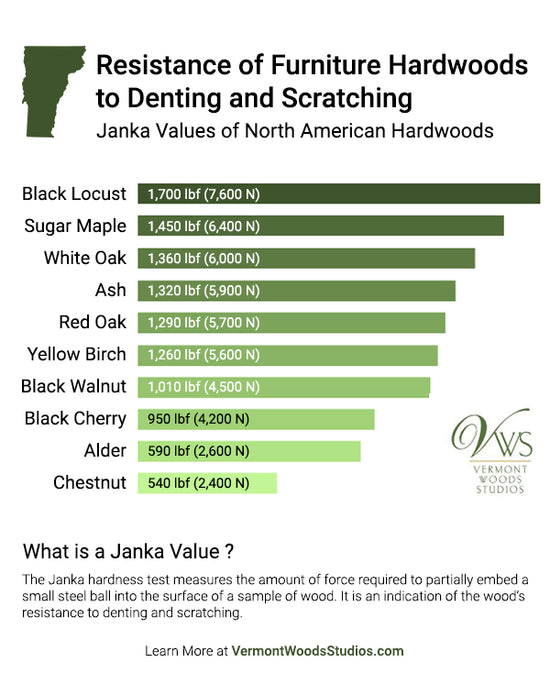
-
How Dense/Hard is Walnut Wood?
Those who are worried about durability of wood may also use the term hardness, though this refers to the Janka hardness test. During this test, a steel ball is placed on a block of wood and force is applied until the ball is embedded halfway. The force is measured in pounds-force (lbf) or represented as a number followed by the word Janka. Wood types may receive a rating based on their side hardness which involves a test run perpendicular to the grain, or may be tested on their end hardness.
Walnut wood rates 1,010 lbf or 1,010 Janka. For comparison, cherry is 995 Janka, and hard maple is 1,450 Janka, while white oak is 1,360 Janka and red oak is 1,290 Janka.
How Can I Tell if the Furniture I Have is Walnut Wood?
The best way to tell if a piece of furniture is made from real walnut wood is to purchase it from a reputable furniture maker, simply because many types of wood look quite similar or can be altered to mimic another type. That said, there are a few tells associated with fake walnut wood.
For starters, an authentic piece will generally have some color variation, even within the individual boards, simply because walnut is not usually stained. Additionally, it will have a straight grain, perhaps with some curls.
Can Walnut Wood Furniture Go Outside?
On the one hand, walnut is a very durable wood. It doesnt usually warp despite changes in humidity and heat, plus its rot-resistant. However, all wood deteriorates when exposed to the elements, so we recommend that you avoid placing walnut furniture outside. Some consumers do choose specially treated wood for outdoor furniture and they maintain the finish on an annual basis. Because of the intensive care required, we recommend a maintenance-free alternative, such as our all-weather Polywood outdoor furniture. Made from recycled high-density plastic, these pieces offer the look of natural wood, but dont require maintenance and come with a lifetime guarantee.
Is Walnut Wood Eco-Friendly? Are Eastern Black Walnut Trees Endangered?
Walnut trees were once quite abundant, but they do take more than 100 years to mature. Early settlers readily took to the wood for building homes, cabinets, and fence posts, while later generations used it for virtually everything, including building railroad tracks and plane propellers.
Although not endangered, there are far fewer trees than before, so mindful companies like ours obtain the wood from sustainable sources; most often from states like Ohio, Indiana, and their neighbors.
In terms of eco-friendliness, it is a great option. By choosing a sustainably-sourced domestic variety, materials spend less time in transit, reducing the carbon footprint. Moreover, harvests are overseen by tight US regulations, meaning tropical deforestation is not a concern. Its also worth taking into consideration that walnuts durability ensures a piece will last 50 or more years when designed by a quality craftsman, whereas a person could easily toss 10 cheap particle board pieces in the trash in the same amount of time.
How to Care for Walnut Wood Furniture
The care of your furniture depends largely upon what type of wood finish is used to seal the wood. While all pieces benefit from regular dusting, its generally best to avoid commercial cleaners as they can sometimes leave residue on pieces with a lacquer finish or damage wax and oil finishes. Pieces with an oil finish generally do best if a natural Danish linseed oil is applied at least once per year, though those in warmer climates may need to do this more often.
Learn more about the different wood finishes we offer and how to care for each one.
What to Look for When Purchasing Walnut Furniture
The biggest mistake people make when buying walnut furniture online is purchasing a piece of furniture that isnt actually made of walnut wood. Many retailers label their products as walnut simply because the color mimics that of natural walnut wood. If youre looking for real walnut wood furniture, here are some things to look out for:
- Authenticity: Is it real, natural walnut wood?
- Craftsmanship: Is it well-crafted using best-in-class techniques?
- Quality: Does it come with a lifetime guarantee?
- Care: What type of finish is used and what type of maintenance is required?
- Eco-Friendliness: Is the wood locally and sustainably harvested?
Read More on the Blog
-
What Color is Real Walnut Wood?
Read MoreAmerican black walnut wood is dark, hard, dense and tight-grained. It's prized by woodworkers for its strength, grain and color.
-
Our Top 9 Walnut Desks for 2023
Read MoreAre you searching for the perfect walnut office desk to upgrade your home or workspace? Look no further! We've compiled our top 9 walnut wood desks that are guaranteed to bring a professional and luxurious touch to any room.
-
Hardwood Furniture Buyer's Guide, Part 1
Read MoreThis hardwood dining table, buffet and chair set is made of American black cherry wood. Mortise and tenon joints are used as well as dovetails in the drawers of the buffet.
-
FSC Certified Wood: Everything You Need to Know
Read MoreSupporters of the sustainable American-made furniture movement prefer the use of domestic wood over the use of imported FSC certified wood.
-
5 Wood Sourcing Certifications
Read MoreSustainable wood sourcing is essential to protecting forests and conserving resources for future generations. By understanding what each designation stands for, you can make informed decisions when purchasing.
Other Types of Wood Species
-
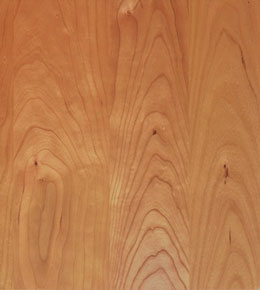
Cherry Wood
More About Cherry -
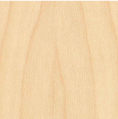
Maple Wood
More About Maple -
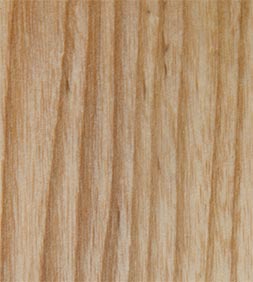
Ash Wood
More About Ash -
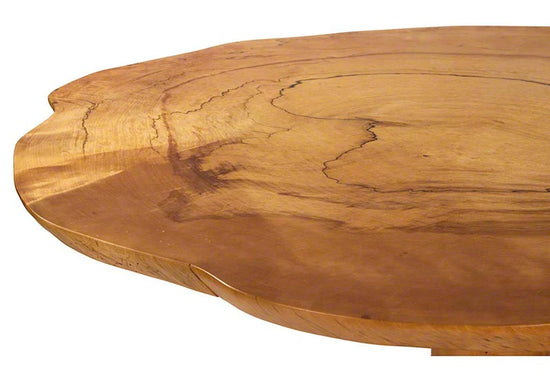
Birch Wood
More About Birch

